Florence St George on the Power of Clay
By
2 years ago
Learning life lessons from clay
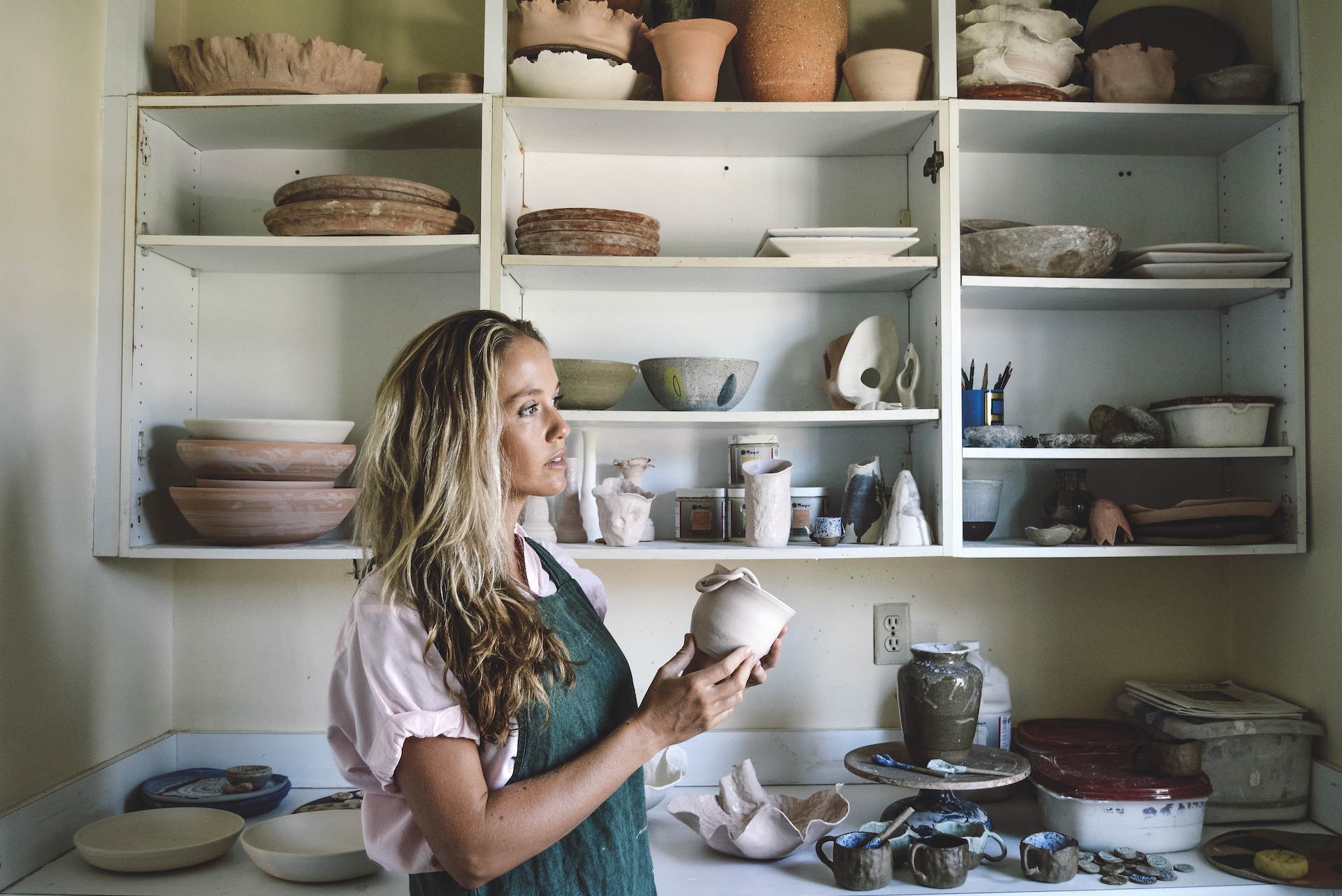
Florence St George lost herself to post-natal depression – and found herself again thanks to pottery. She recounts her story, as told in her new book The Potter’s Way.
Interview with Florence St George
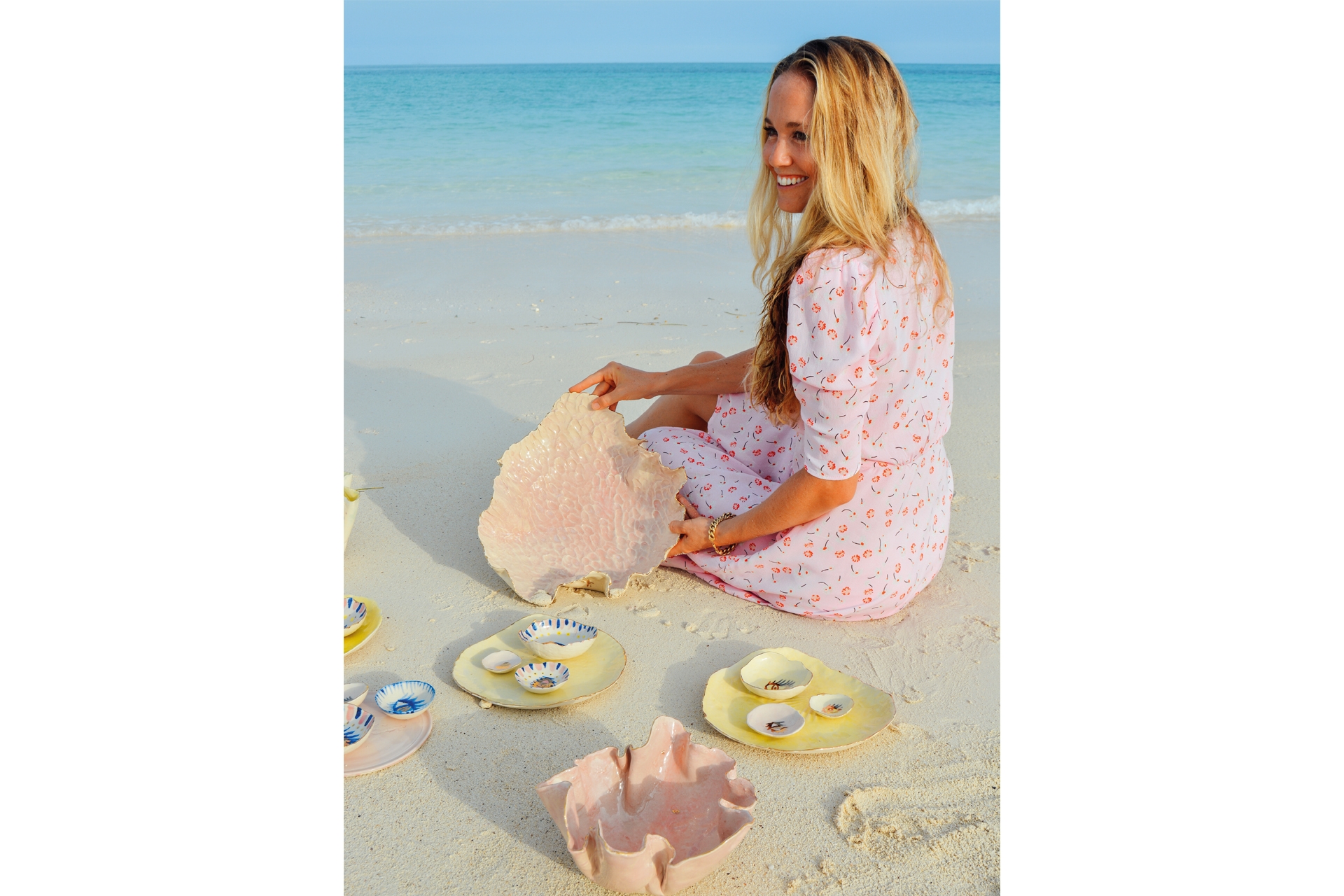
Florence with some of her pottery on the beach in the Bahamas, where she lives
From the outside it looked like Florence St George lived a charmed life. Blessed with beauty, intelligence and drive, she modelled and acted her way through her twenties, dating princes and Formula 1 champions, covering Tatler magazine, appearing on all the society party pages, and generally having a ball. It culminated in a beautiful white wedding in the south of France in 2013 to Henry St George.
But her life lost its fairytale façade a year after, following the birth of her first child, Iris. Florence, or Flea as she’s known, recalls her journey into post-natal depression and back again in her new memoir-meets-self-help-manual, The Potter’s Way, in which she explores how working with clay became key to her recovery.
We connect through Zoom, Florence dialling in from the sunny Bahamas, where she lives with her family (Henry is vice president of The Grand Bahamas Port Authority) and me from rainy old London. In person she’s witty, thoughtful, and incredibly well read – all of which can be seen in the pages of The Potter’s Way, which is packed with citations to her reading around the subjects of anxiety, self-help, and creativity.
The first of which is, of course, the book’s title, referencing the famous Artist’s Way by Julia Cameron, which guides people to harness their creative skills. ‘My mum, who is an artist, always had it by the loo,’ laughs Florence. She continues: ‘My initial title was From Prozac to Pottery but that was very much vetoed, which is totally fair enough’.
In The Potter’s Way she is clear that it was a combination of pottery and medication that helped her recover from her severe post-natal depression. She writes about her illness in a very matter-of-fact way. ‘That first night in hospital, somewhere inside my tired body and fuzzy brain, I knew something was not right with me,’ she remembers of the time directly after giving birth in July 2014. ‘Now, I recognise this momentary unease was the beginning of a depression that would evolve into something much darker.’
She continues: ‘Symptoms of PND can descend like fog on a winter’s day. Sudden, brutal and blocking out the sun. Or, they can be gradual, more like snowfall, where each tiny flake adds to the mass and before you know it you’re in deep. By the end of the summer, I knew I wasn’t right. That niggle in the hospital had mushroomed into full-blown panic.’
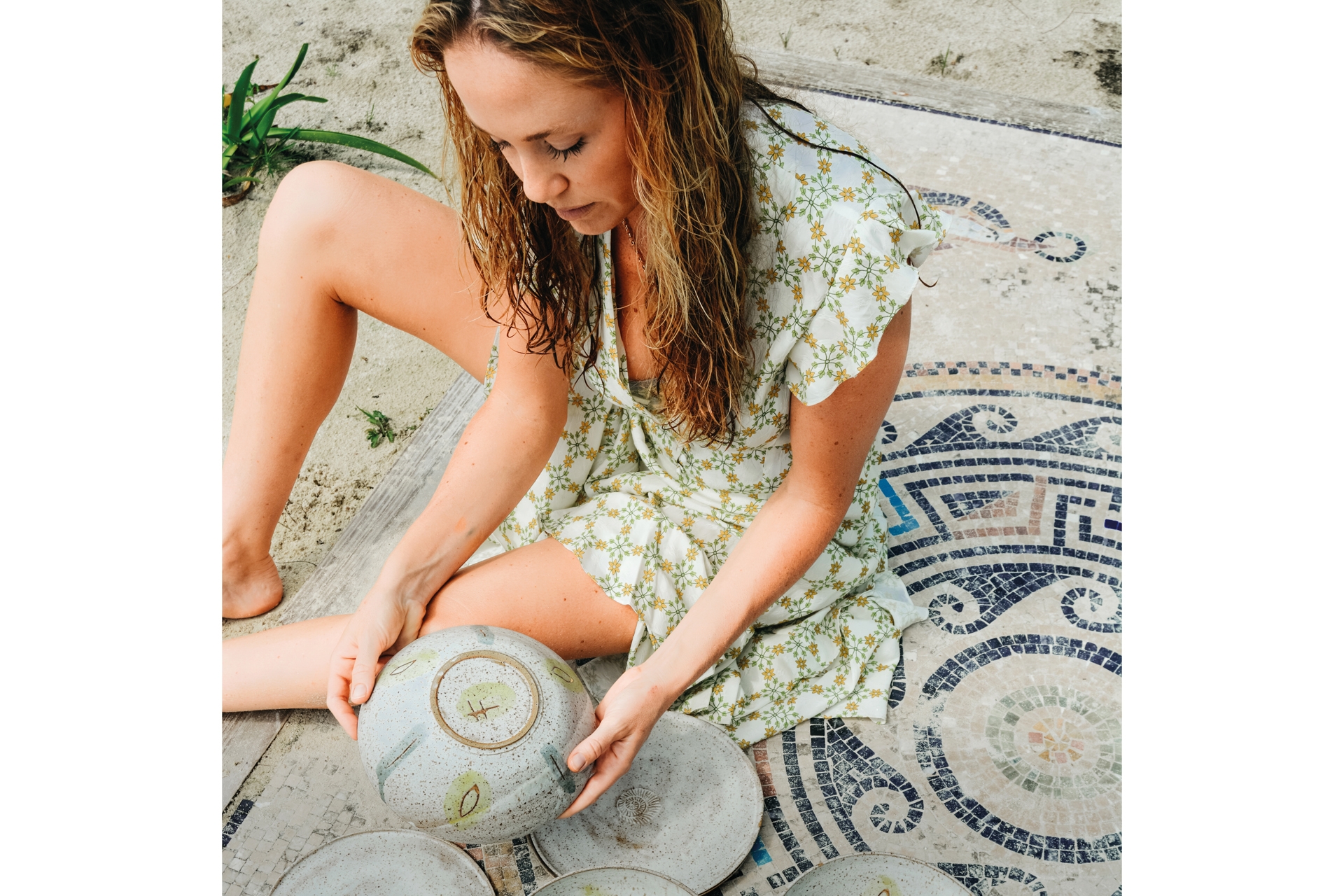
She became plagued by anxious thoughts of planes falling out of the sky and bus fumes poisoning her baby. She hid them from her family as she didn’t want them to think her ‘mad and hysterical’. Later on, she felt overcome with anger and frustration.
By Christmas 2014, Henry encouraged her to seek professional help, and Florence was referred to a psychiatrist. The doctor asked her what she enjoyed doing. ‘All I could feel was emptiness,’ she writers. ‘“I don’t know,” I said, because there were no words in my head and my heart felt numb.’
He prescribed her Prozac, which Florence credits for helping her ‘climb out of the deep, dark well and feel like my old self again’. Slowly she got into a routine with Iris, and felt more at peace. Little did she know, she had stumbled into to what she explains in The Potter’s Way was a ‘fertile void’ – a term that describes the creative energy that can be found in life’s quiet in-between moments – and discovered pottery.
‘Think of it [the fertile void] as a kind of gap year for the soul or a magical mystery tour to a happier you,’ writes Florence. She started watching The Great Pottery Throw Down while Iris was asleep, and was inspired to sign up to some classes. ‘When I first sat down with a lump of clay, something inside me burst open and I felt alive again,’ she writes.
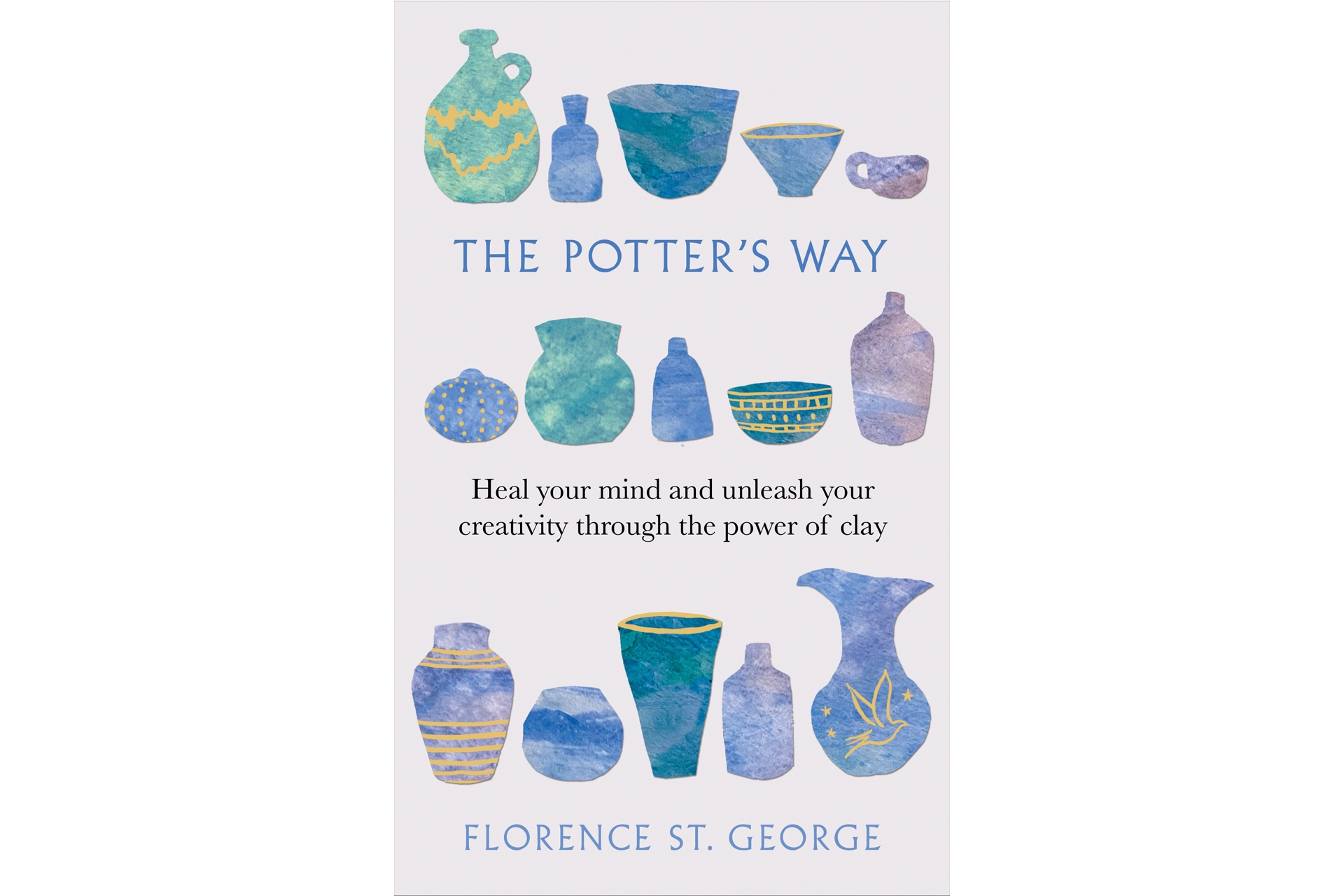
Her experience is reflected in science: in The Potter’s Way Florence cites neuroscientist Dr Kelly Lambert, who has carried out studies with rats and humans that show that being engaged in effort-based activities and keeping your hands busy at things like crafts actually increases serotonin and oxytocin levels, combating depression.
Just as Florence was discovering the healing power of pottery, she fell pregnant again with son Jimmy, who became seriously ill with bronchiolitis when he was only two weeks old. This time, it was a combination of Prozac and clay that helped her cope.
A few years later, after honing her technique and building her confidence, Florence found herself signing up to The Great Pottery Throw Down. ‘It was one among many turning points in my life,’ she tells me. ‘It was really out of my comfort zone doing something like that. Post having babies, I hated photographs taken of me – it was really weird. And as they filmed me from all angles, I thought, “why am I doing this?” This is not why I signed up for pottery. I did it because I wanted a gentle past time. But it was the best thing I ever did. I think it’s a real lesson for me, because I’m always tempted to just cocoon myself.’
One of the best things to come out of Throw Down was that she was finally being recognised on her own terms, without superficial labels. ‘In my twenties I was always known as a lingerie model, or someone’s girlfriend, and then I was someone’s ex-girlfriend, and I was never…’ she pauses, thinking of the right word. ‘What’s really amazing is that I’m doing all these interviews about Florence as a potter. And that feels empowering. It’s extraordinary.’
Post-Throw Down, Florence threw herself into her pottery, and turned her hobby into a flourishing business. As well as her own distinctive one-of-a-kind pieces, inspired by the colours, nature and landscape of the Bahamas, she has collaborated with artists like Hugo Guinness, and recently the jeweller Monica Vinader, on a collection inspired by island sunsets. In the pottery world she has found a community of like-minded people, something else that she writes in The Potter’s Way that is also key to health and happiness.
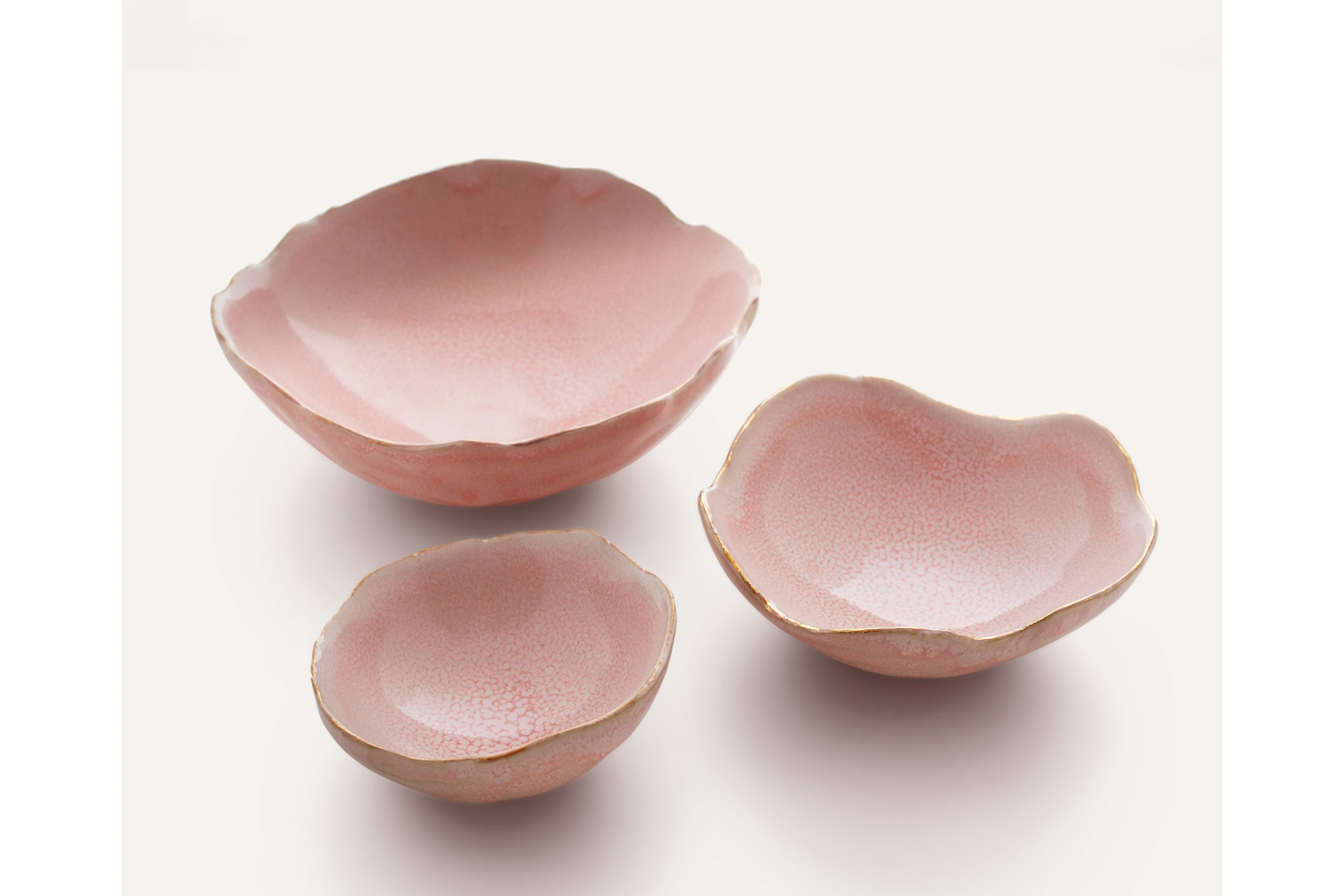
Florence St George x Monica Vinader pots
This summer, Florence and her family will leave the Bahamas, and move back to the UK – Oxfordshire to be precise. Then the long-term dream is to set up a pottery academy, where she can share what she’s learnt in the last decade with a new cohort of potters.
From reading The Potter’s Way and chatting to Florence, it’s clear that creating pottery is an almost spiritual experience for her – a way of accessing her authentic self. ‘I believe that finding your identity is a crucial part of healing from depression,’ she writes in her book. Through the process of shaping clay, Florence uncovered the substance of who she really is – with no fairytales in sight.
The Potter’s Way is out now (Short Books, £16.99). Florence is in conversation at the Hay Festival on 1 June 2023. hayfestival.com



